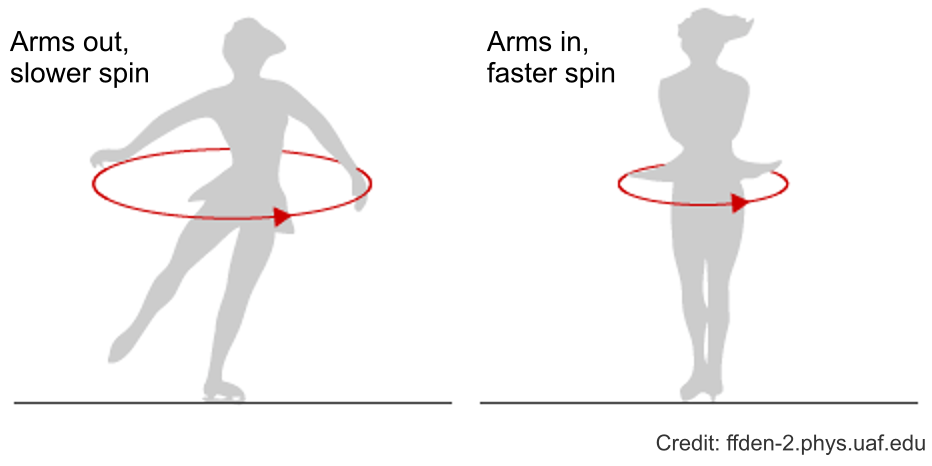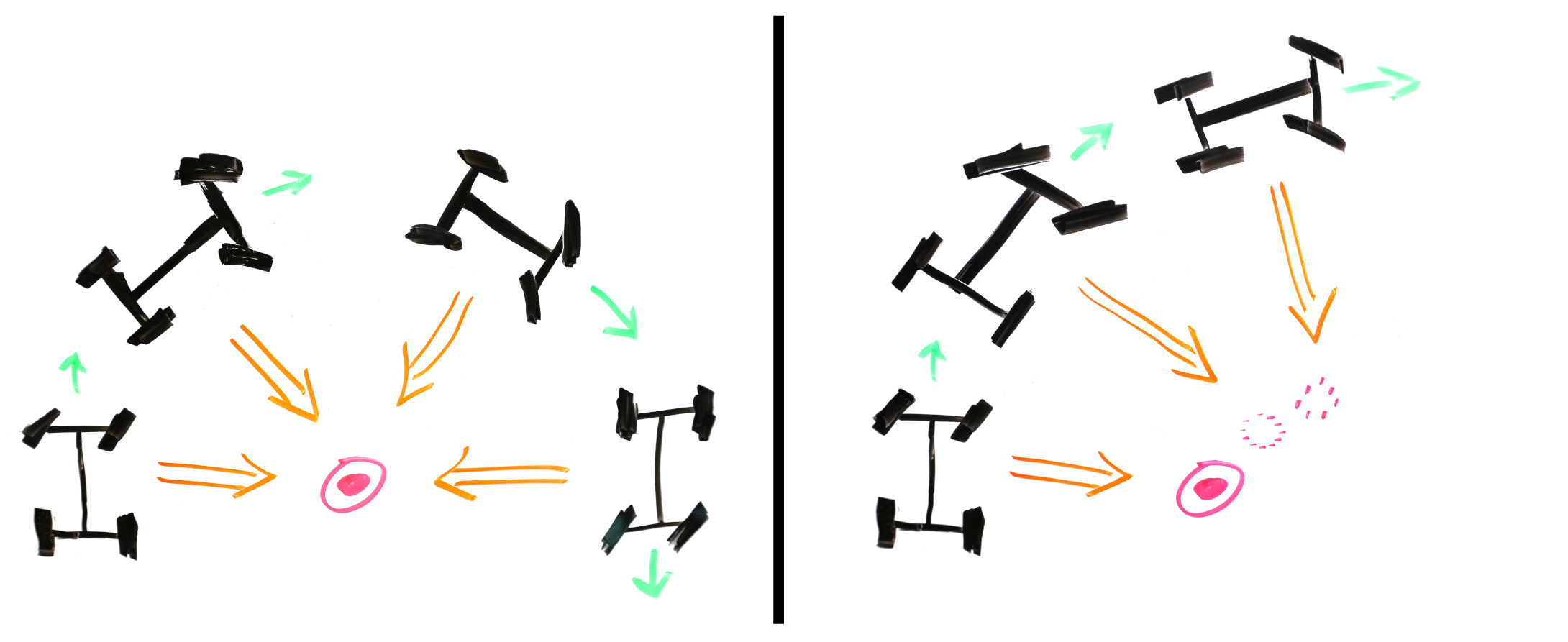Vehicle Dynamics / General
The way in which a vehicle’s mass is distributed affects how much it rotates for a given rotational force.
How Rotation Happens
A vehicle's rotation force initiates from steering wheel inputs (ie. front wheel angles), and its rotation resistance comes from its mass distribution.
Like a figure skater, the closer the vehicle’s mass is to its center, the more it will rotate for a given rotational force, and vice versa.

Rotation vs Turning
Rotation is different from turning. Turning has to do with moving the vehicle's momentum in an arc so it comes out of a corner travelling in a different direction than it went in. Rotation, on the other hand, has to do with the direction that a vehicle is pointing.
For example, if a vehicle rotates a lot but turns very little, it has spun out of control. The opposite, however, is not possible (little rotation but a lot of turning) because rotation is a prerequisite for turning; that is, the vehicle must rotate before its grip can cause it to turn.

Right: A vehicle with high yaw resistance has a hard time rotating, preventing it from keeping its acceleration vector pointing at the center of the turning radius, causing it to follow a false center and ending up with a wider turning radius than desired.
Therefore, it is important for a car to rotate easily so that it can continue to turn though its desired arc.
Generally, we want a vehicle to have a low moment of inertia (low yaw/rotation resistance), which typically implies a mid-engine layout. Of course, there may be a reason to place the engine somewhere else:
- front mounted engines can generally be larger
- front-wheel-drive vehicles are intended to be simple and economical, so the engine is mounted in the front, making powering the front wheels mechanically simple
- rear mounted engines can provide more acceleration traction in rear-wheel-drive vehicles by adding weight over the powered rear wheels
Conclusion
Whatever a vehicle's front:rear weight distribution, that is, wherever the center of mass ("COM") is located, the mass of the vehicle should ideally be concentrated around this COM as much as possible to allow for faster rotation, and therefore, sharper cornering.
Unless a vehicle is designed exclusively for race tracks that only have wide, sweeping corners, sharper cornering (the ability to create a tight turning arc, perhaps even tighter than the vehicle's grip can manage) provided by a concentrated mass distribution gives the driver good control of the oversteer/understeer balance, allowing them to dance on the limit without resistance from the vehicle.